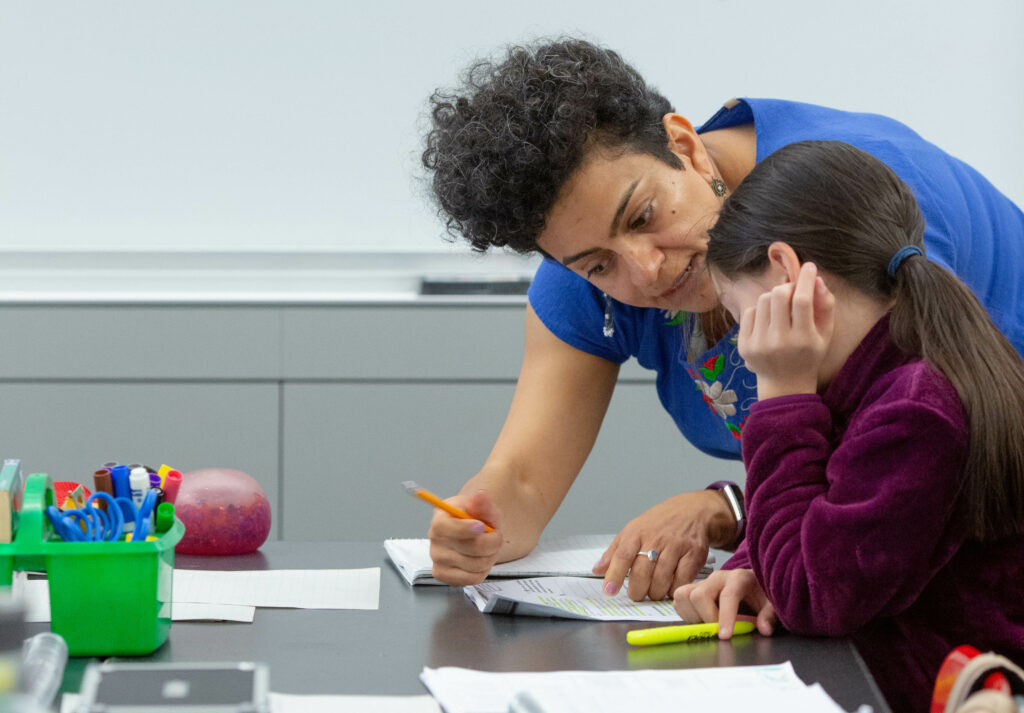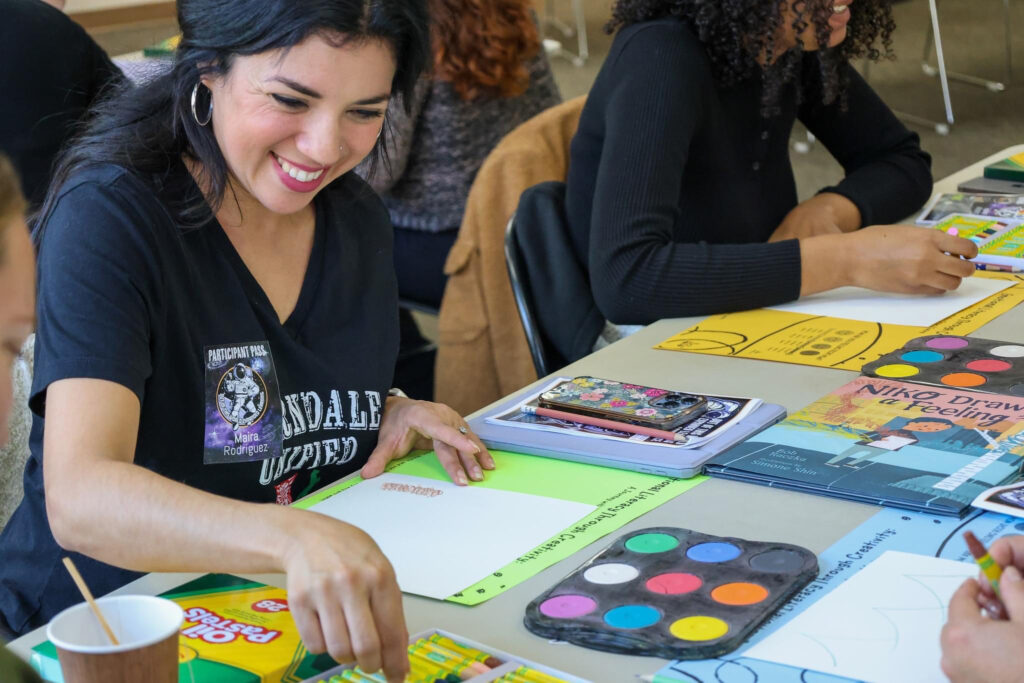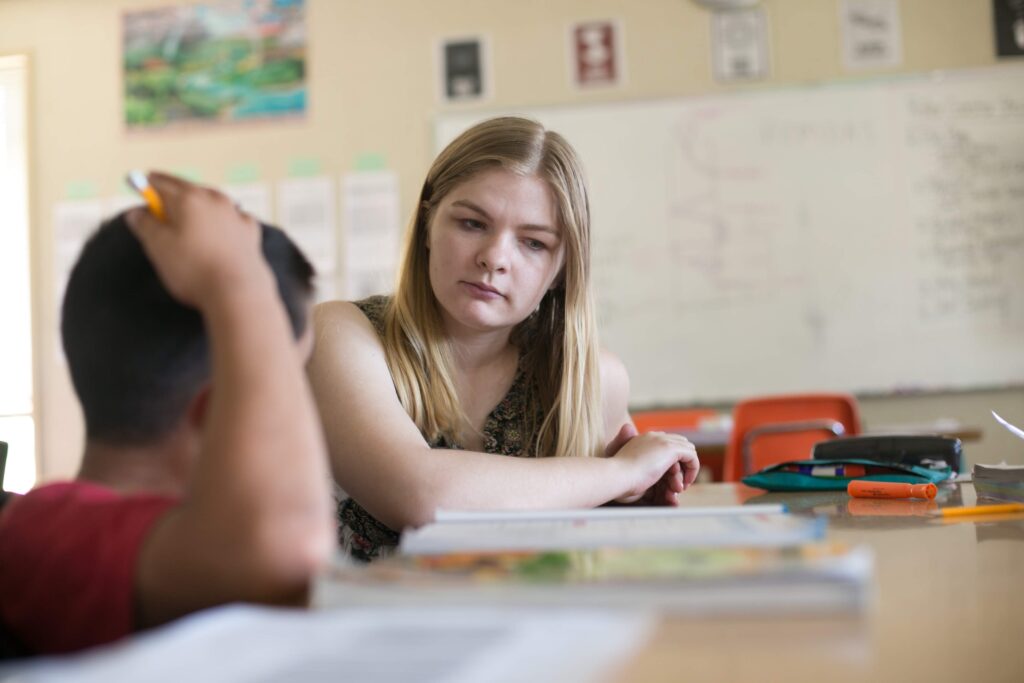
Credit: Allison Shelley for American Education
Growing up with a physical disability, I feared that people would only see me on a surface level. I thought teachers, friends and peers would only see me for what I couldn’t do, not what I could.
I’m fortunate, though. I’m strong, and I found those who believe in me. My teachers helped me overcome obstacles and saw that I am multifaceted — as every student is.
Now, I’m in a place where I want to be that person — the role model, the cheerleader, the coach — for others.
I knew from a young age that I wanted to provide that sort of mentorship to others. While in college studying neuroscience, I heard about a high-dosage tutoring program where I could help students with their schoolwork virtually while fostering strong relationships with them. This form of tutoring creates a strong, sustained bond between the tutor and student and provides at least 90 minutes of direct instruction each week. I’m now in my second year of tutoring, and I’m a better person for it. Every school should invest in high-dosage tutoring programs, and anyone interested in pursuing a career in education should sign up. Here’s why.
Tutoring creates a pathway for new teachers. We need more equipped adults in the classroom. My program is the Ignite Fellowship through Teach For America California, which provides robust training so that we have the content knowledge and pedagogical skills we need to feel prepared and sustain our roles. Plus, we are paid stipends so we can afford to focus on this work.
Teaching is a unique profession, and if we want to attract and retain educators, we should give them opportunities to test-drive the role. My experience with tutoring has shown me what it might be like to be a full-time teacher before committing. Since fellows are all college students, we’re also exposing our students to the possibility of college and beyond. I’m a proud member of Gen Z, and while you might only think of Gen Z as the TikTok generation, I think of our mission-driven sensibilities. We’re motivated to give back. A career in education aligns with this, and we should welcome this cadre of potential new teachers.
Relationships matter. Students won’t learn from someone they don’t like. They’re seeking role models who will take the time to get to know them as individuals; tutoring provides space to create that connection.
I remember tutoring a special-needs student for the first time. At first, it was challenging — he could get frustrated and shut down. I didn’t give up on him. If my educators had given up on me when I was seeking support and validation, I wouldn’t be where I am today. I learned his favorite video games and his favorite Pokémon cards, then integrated those themes into our lessons. It’s key to learn your students’ distinct personalities. I watched him open up, and things clicked. The lesson is valuable: When teachers can relate concepts to students’ interests, it makes a huge difference to their learning.
One-on-one attention is powerful. Large classes and high student-teacher ratios don’t always allow teachers to provide the one-on-one attention each student deserves. Enter: tutors. In my program, students receive 45 minutes of personalized tutoring thrice a week. The instruction is research-based and tied into the curriculum. We’re not asking students for extra time or for parents to rearrange their schedules — we’re embedding this high-impact, high-dosage tutoring into the school day.
As the achievement gap persists, it’s crucial that students receive individualized opportunities to learn and catch up. High-dosage tutoring allows this. Each semester I create close relationships with my students and learn their strengths and areas of growth, allowing me to tailor my teaching style to what’s going to be most effective for each student. And it’s working. At one of the schools where I tutor, Aspire Rosa Parks in Stockton, 71% of students working with Ignite fellows met their reading and math goals, and we provided 437 additional hours of individualized learning in just one semester. Plus, 98% of partner schools report that this tutoring boosts students’ academic achievement and engagement.
My experience as a tutor has been incredibly eye-opening. In my two years as an Ignite fellow, I’ve been able to work with elementary and middle school students across five different schools, which allowed me to connect with underrepresented students who need extra resources. Plus, I have found an inclusive and supportive community of those who want to inspire future generations. I have become a better leader and have gained a new perspective on educational equity. High-dosage tutoring helps students reach their academic goals while also facilitating a sense of belonging and connection with adults who want them to succeed — it’s a win-win.
●●●
Roxane Knorr is a Teach For America Ignite Fellow and a 2022 UCLA alumna.
The opinions in this commentary are those of the author. If you would like to submit a commentary, please review our guidelines and contact us.






